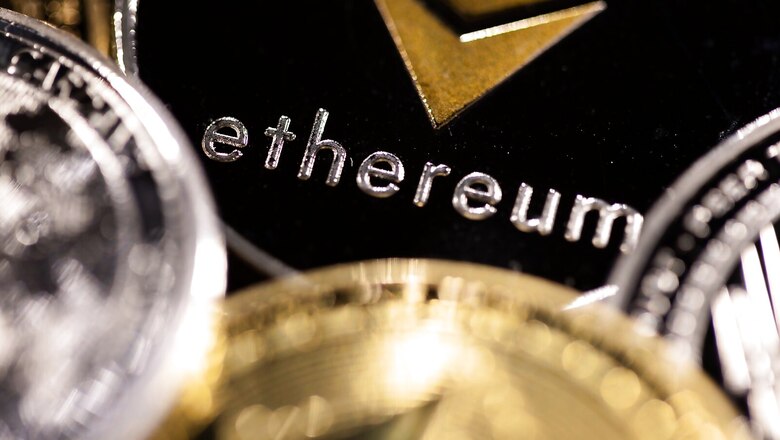
views
Amidst much anticipation and fanfare on Thursday, Ethereum finally and successfully transitioned to a proof-of-stake (PoS) system. The second largest crypto in the world has fundamentally migrated to a mechanism that is 99.95% less energy-consuming. After the merge, ETH was trading at $1,606, rising just 0.24% in the previous 24 hours.
“There was no significant price movement observed during the merge. But it will be interesting to see the price movement in the coming months,” said Amanjot Malhotra, Country Head-India, Bitay.
However, there is no noticeable change in store for regular investors post-merge. Gas fees, i.e., the transaction costs remain at pre-merge levels. The transactional speed on the ETH network will also not skyrocket dramatically. Earlier, mining one block of ETH meant about 13 seconds, which will fall to 12 seconds post-merge.
But its impact on the developer community is immense since PoS means increased scalability. Home to more than 3,500 active decentralised apps and a $60-billion ecosystem that’s built on this chain, Ethereum presently leads the global race in blockchain and Web 3.0 development by a long way.
But as Rajagopal Menon, vice president of WazirX, puts it, “This merge does not directly address the ongoing issues of scalability or high gas fees but it paves the way to address them in future updates. One of the key benefits of the merge is the dramatically reduced ETH issuance which has been dubbed the ‘triple-halving’ of ETH”.
Menon is referring to the sizeable cut down on the number of ETHs issued daily. From about 13,000 ETH per day prior to the merge, the day-to-day ETH generation cap will be set at 1,600.
What next?
“With the merge already done and dusted, the ETH fanatics are already looking forward to ‘the surge, the verge, the purge, and the splurge,” continued Menon.
Notably, the merge is just the first step of the five other upgrades that are expected to be deployed by 2026. It’s the next stage, i.e., the surge that will introduce sharding in the ETH ecosystem, super-charging the Ethereum blockchain to process high volumes of transactions in mere seconds. From its present capacity to tackle just 15-20 of them every second, sharding will skyrocket the speed to process 1,00,000 per second.
However, crypto exchanges like Giottus and CoinSwitch Kuber are doling out incentives to attract investors in a bid to boost their ailing trading volumes. For instance, Giottus is suspending all fees on the ETH/INR trading pair for the next 7 days, starting Friday. CoinSwitch Kuber’s “Ethereum Trading League”, with a prize pool of Rs 2 lakh, aims to reward users who made profits trading ETH.
Bye-bye, miners
With the merge, Ethereum has officially bid adieu to its miners, who undertook block validation in its previous PoW avatar. Naturally, these ETH validators, who raked in about $19 billion last year via mining the coin, are rattled. Ideas of a hard fork, i.e., an irreversible split of the blockchain to birth a new system, have been floating around. Expected to take place within the next few hours, it has garnered some support from prominent names like Coinbase.
But momentum around it is relatively feeble, thanks to the solid support that rallied around the merge. Most experts expect its embers to die down very soon.
Notes Om Malviya, president, Tezos India, “Considering the complexity of such a transition, it is going to take a lot of time. ‘Forking’ is inevitable when it comes to the real use case of The Merge. One can term this event as a trick to create hype around Ethereum. But the long-term implications will only become more clear and evident once the change takes place.”
Given that the entire ETH ecosystem will now run on locked or staked ETH, staking will now assume new-found importance. But as per Minal Thukral, executive vice president, Growth and Strategy, CoinDCX, the impact of reduced ETH supply, since it’s staked more and issued less, will only be noticed in the times to come.
Users can expect trouble withdrawing their staked ETH immediately after the merge since their funds will be locked in for about a year. However, this locked ETH can earn them up to 7% annually.
Read all the Latest Business News and Breaking News here

















Comments
0 comment